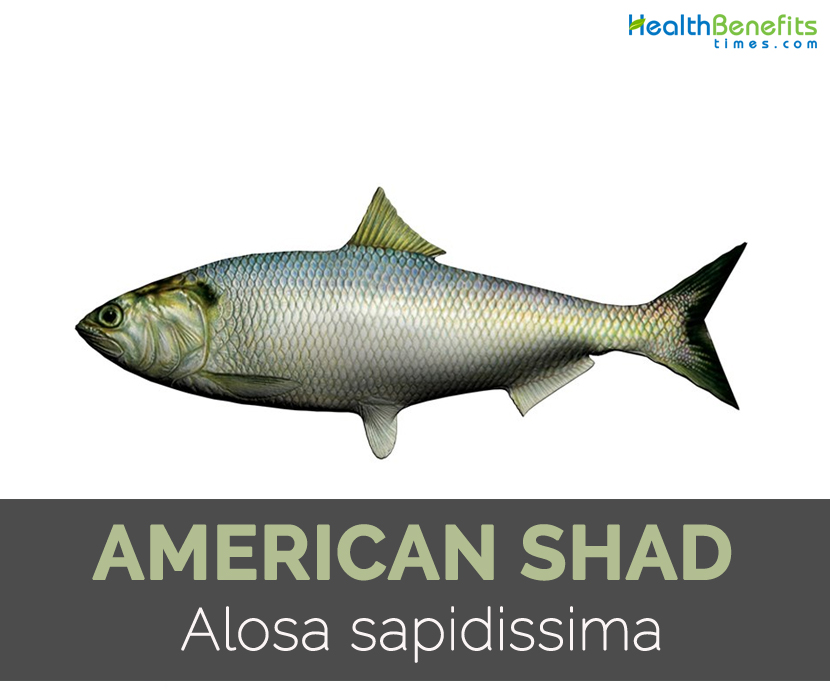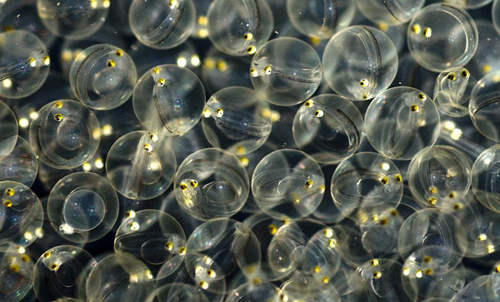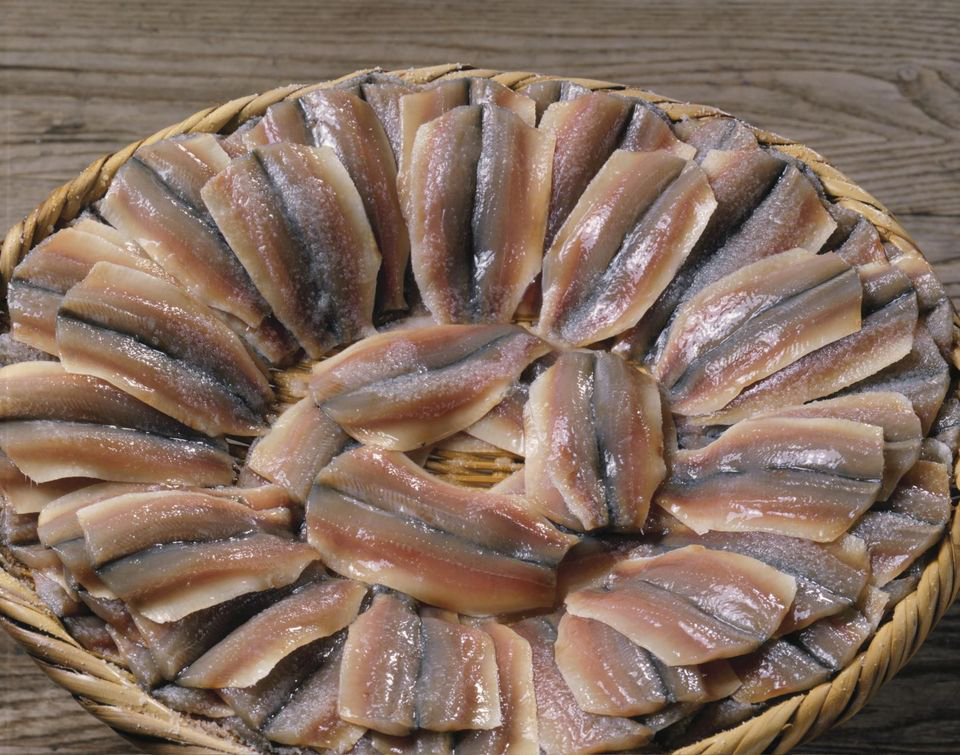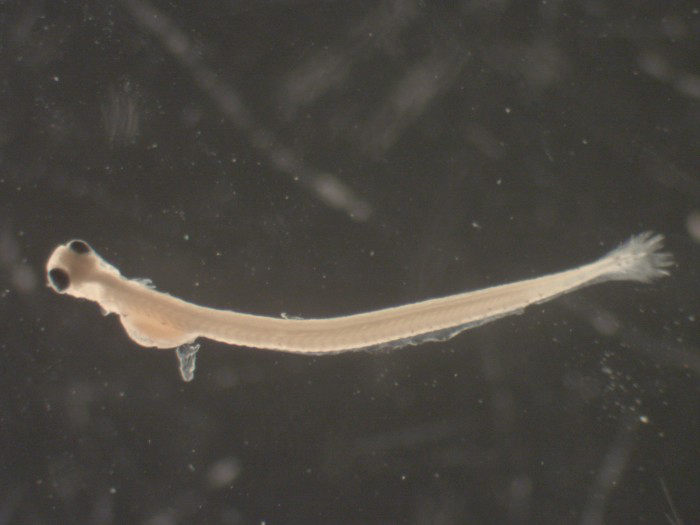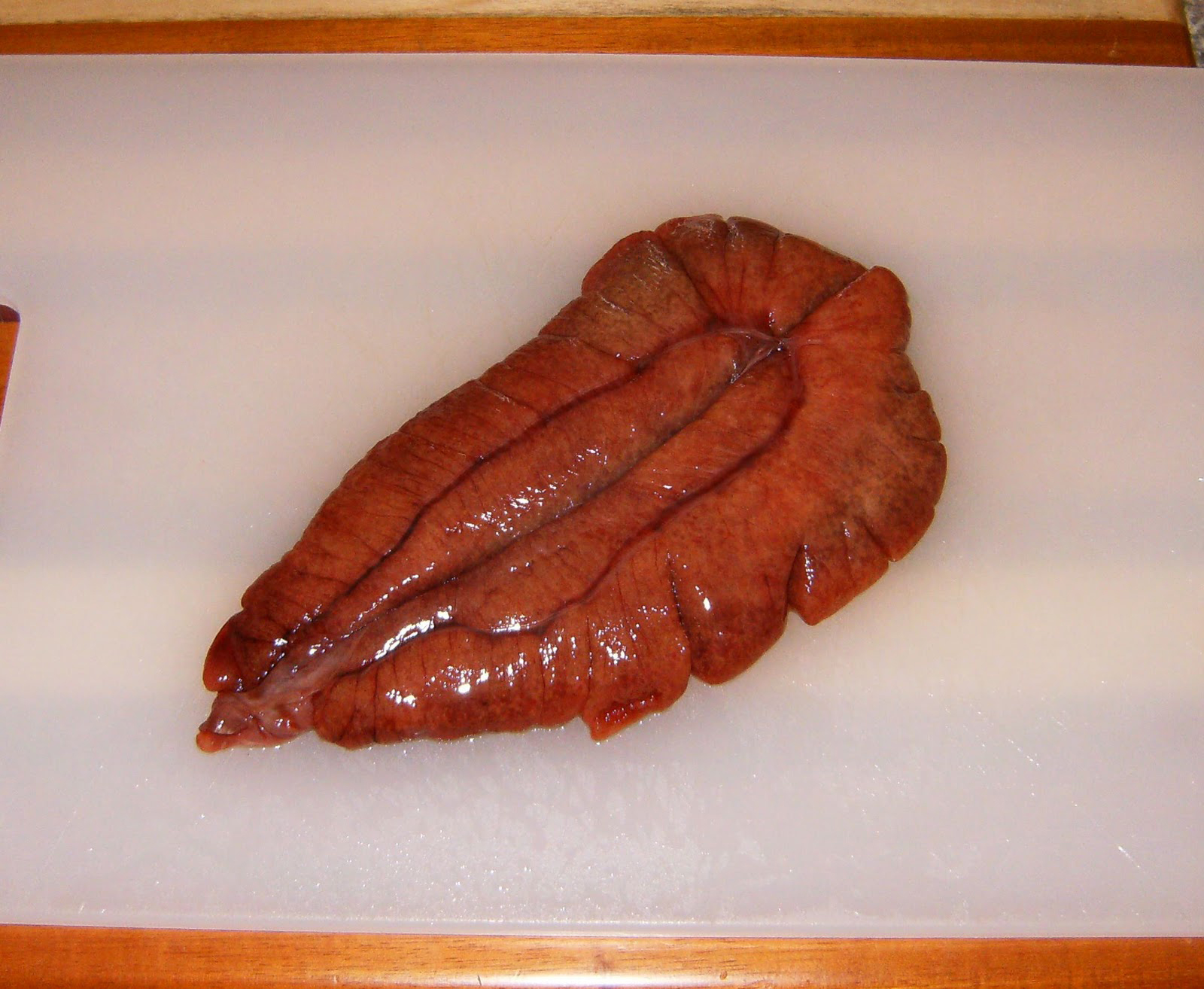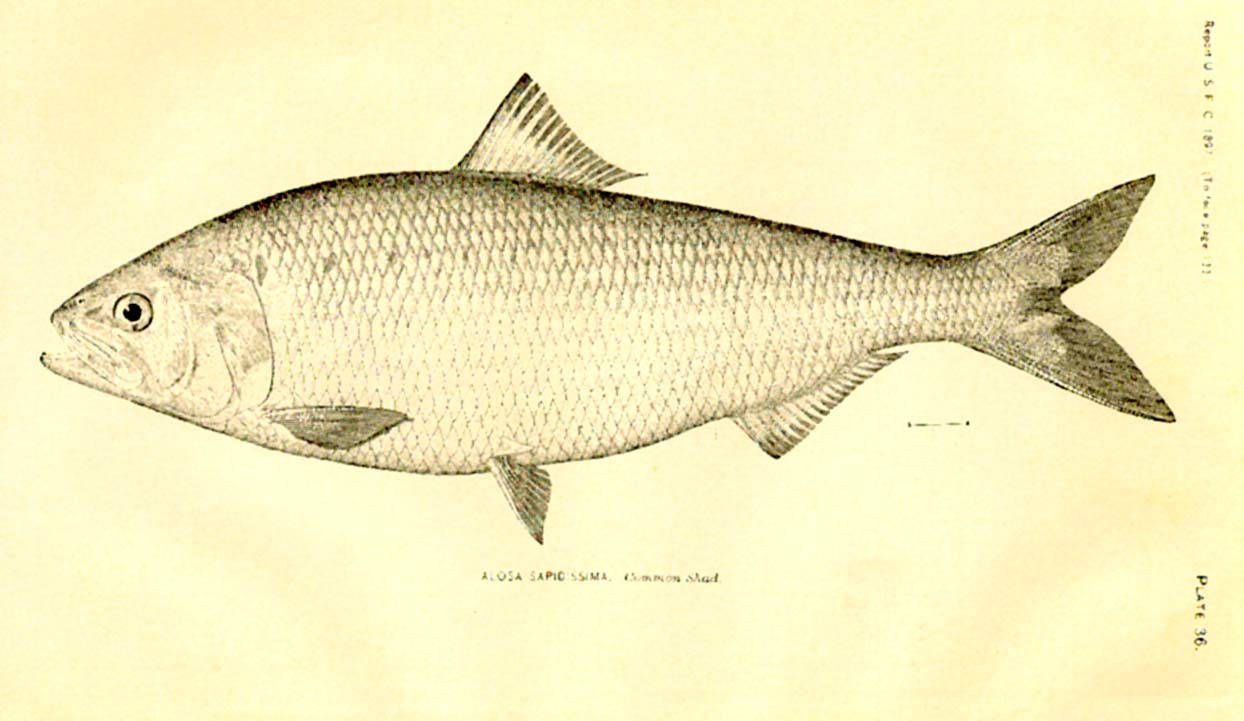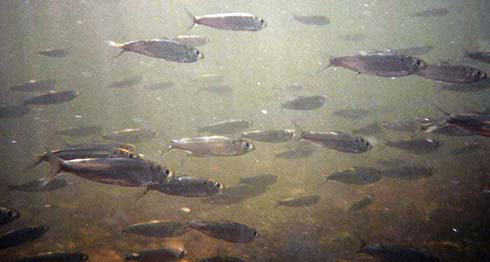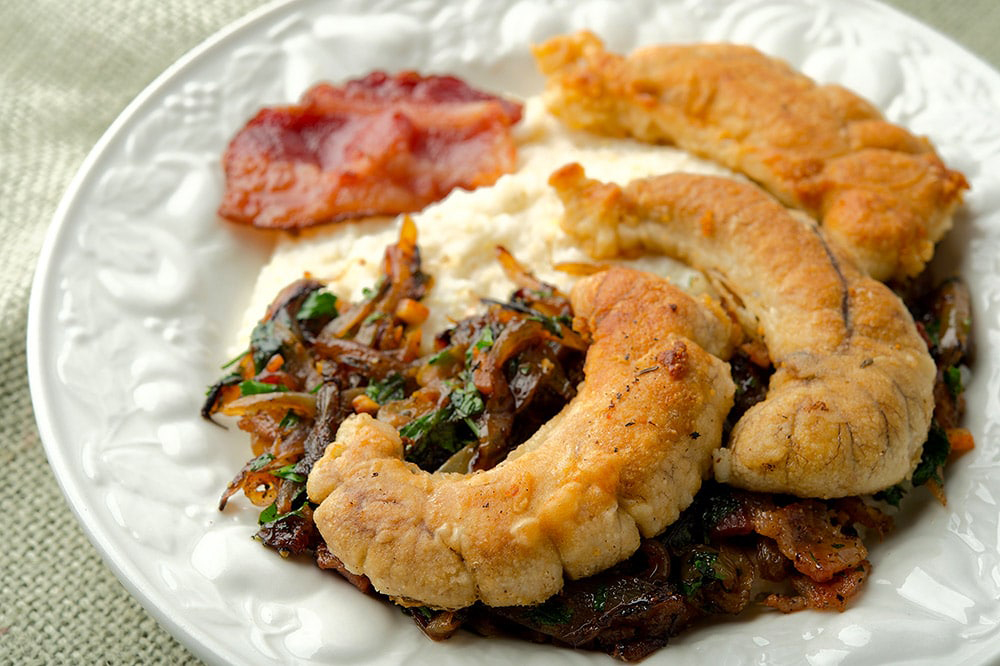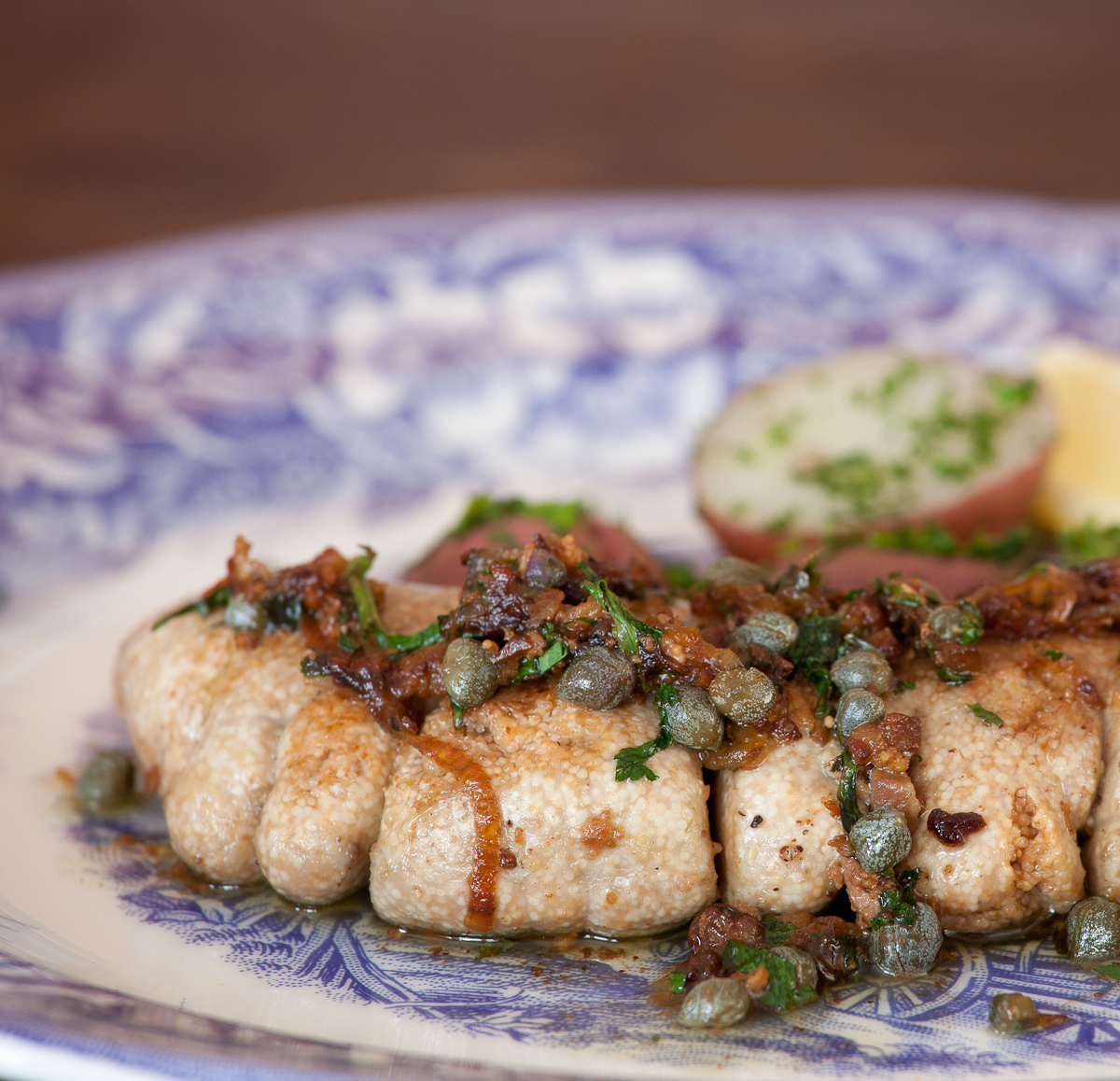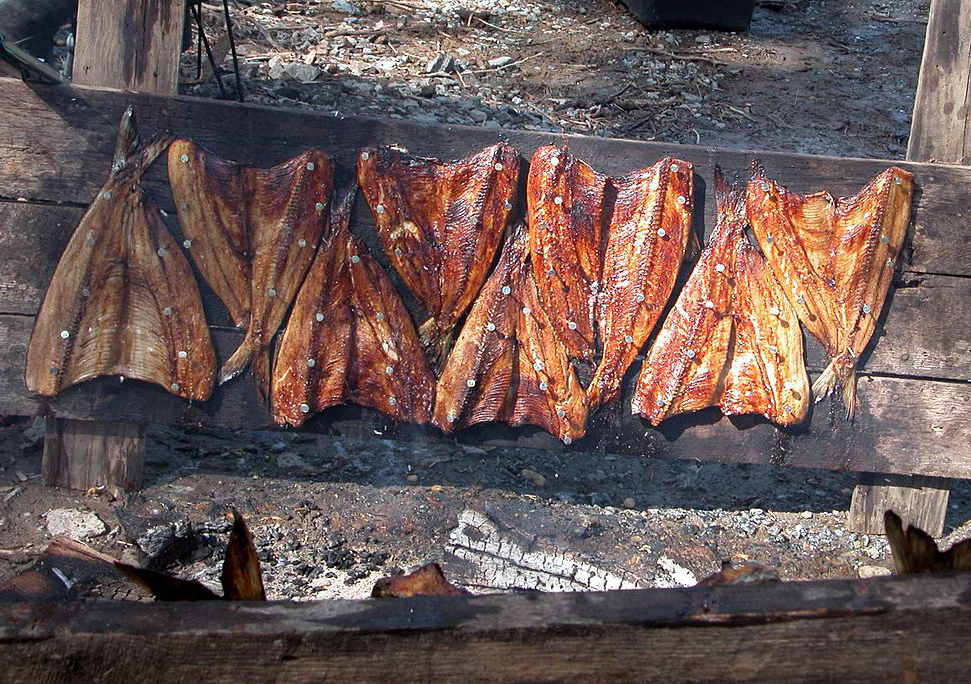Description
American shad has silver underbelly, dark blue to green above and paler sides. There is a large dusky spot behind the upper edge of its gill cover which is followed by various small, less distinct and dusky sports. It has laterally compressed body with deeply forked tail fin. The midline of its belly is sharp and saw edged and its scales are large. It has only one anal fin and one dorsal fin. These are the largest members of true herring family and could measure 30 inches long weighing over 9 pounds.
Predators
Its predators are birds, bears and large fish such as smallmouth bass, striped bass, blue fish and channel catfish.
Reproduction and Life Cycle
American shad are anadromous i.e. it lives in ocean but spawns in freshwater rivers or streams. Adults migrate to waterway in spring in which they were born to spawn. Female could lay 1, 00,000 to 6, 00,000 eggs. Eggs drift downstream & hatch in 7 to 10 days. Adults die or return to the ocean after spawning. Juveniles stay in nursery areas feeding on terrestrial insects and zooplankton. It has the lifespan of 6 to 10 years.
Habitat
American shad live in schools near shorelines. The populations which spawn on Eastern Coast assemble off Maine, Massachusetts and in the Bay of Fundy in summer and off Virginia, North Carolina and Florida in winter.
Lifespan
American shad can live from 6 to 10 years in the wild and 9 years average. Migration (from rivers to the sea) places a heavy toll on their bodies and increased migration promotes mortality. Migrating females have 60 % as an average mortality rate during seasons in which they migrate. American shad are anticipated to live 4 to 7 years (average 6 years) in captivity.
Diet
Juveniles are omnivores and its diet consists of insect larvae and zooplankton especially copepods and mysids. Once juveniles left spawning areas, they eat more once. As it gets older, American shad broadens diet including small fish, plankton, crustaceans, worms and fish eggs. During migration (in the late months of winter), shad consumes very little food. Thus, as the water temperatures increases in spring, its diet returns to normal.
History
Native Americans captured shad as a predominant food and European colonists used to keep barrels of salted shad in their homes. Shad were considered the savior fish during Revolutionary War which fed George Washington’s troops after the harsh winter of 1778. The harvest of other herring and shad from Potomac River added income Washington made on the plantation of Mount Vernon.
Over 19th century, fishermen congregated to region’s river for spring shad spawning runs. Often the fish were prepared though planking method (tacking fish to wooden boards and smoking them to an open fire). This tradition is honored by some communities that continue to hold festivals.
How to Eat
- Shad is used fresh, smoked or salted.
- Roe is consumed broiled, fried and baked.
- It is boiled, filleted & fried in butter and baked.
- Usually fillets are baked or broiled.
- Shad roe is sautéed in butter or cooked in white wine.
Other Facts
- They are the largest member of herring fish family.
- The term sapidissima refers most savory and most delicious.
- It is found along east coast of North America from Newfoundland to Florida and is most abundant from Connecticut to North Carolina.
- Most of the time, they lives in coastal ocean waters but they migrate back to rivers every year where they hatched to spawn.
- During its lifetime, shad swim over 12000 miles.
- The recorded largest American shad is about 2 feet and 6 inches long.
- In Maryland, an oldest American shad recorded was 11 years old.
- In Chesapeake Bay region, shad roe is regarded as delicacy.
References:
https://www.itis.gov/servlet/SingleRpt/SingleRpt?search_topic=TSN&search_value=161702#null
https://en.wikipedia.org/wiki/American_shad
https://www.fws.gov/fisheries/fishmigration/american_shad.html
https://www.chesapeakebay.net/S=0/fieldguide/critter/american_shad
http://animaldiversity.org/accounts/Alosa_sapidissima/
https://www.ncpedia.org/wildlife/american-shad
https://www.seafoodsource.com/seafood-handbook/finfish/shad-american
file:///C:/Users/drchi_000/Downloads/id_americanshad.pdf
http://espacepourlavie.ca/en/biodome-fauna/american-shad
https://www.chesapeakebay.net/issues/shad
http://dnr.maryland.gov/fisheries/Pages/Fish-Facts.aspx?fishname=American%20Shad
Comments
| American Shad Quick Facts | |
|---|---|
| Name: | American Shad |
| Scientific Name: | Alosa sapidissima |
| Origin | Native to Atlantic Coast |
| Colors | Blue and metallic |
| Shapes | Compressed, 76 cm long |
| Flesh colors | Raw: Grayish; Cooked: Pinkish beige to deep brown |
| Calories | 363 Kcal./cup |
| Major nutrients | Selenium (122.55%) Vitamin B3 (96.92%) Isoleucine (86.12%) Lysine (85.83%) Tryptophan (79.55%) |
| Name | American Shad |
|---|---|
| Scientific Name | Alosa sapidissima |
| Native | Native to Atlantic Coast |
| Common/English Name | Atlantic shad, Common shad, Connecticut River shad, Herring jack, North River shad, Potomac shad, Shad, Susquehanna shad, White shad, Northern silver shad |
| Name in Other Languages | Czech: Placka chutná; Danish: Amerikansk stamsild; Dutch: Amerikaanse elft, Amerikaanse meivis; Finnish: Amerikankantasilli, Amerikansilli; French: Alosa sapidissima, Alose, Alose canadienne, alose savoureuse; German: Amerikanische Alse, Amerikanische Finte, Amerikanischer Maifisch; Italian: Alaccia Americana, Allaccia Americana; Mandarin Chinese: Měizhōu xī fèi (美洲西鯡), Měizhōu xī fēi (美洲西鲱); Norwegian: Amerikansk shad; Polish: Alosa amerykanska a. zlotosledz; Portuguese: Sável Americano, Sável-americano; Romanian: Hering American; Russian: amerikanskiy shed (американский шэд), американ; Serbian: Americka lojka; Spanish: Sábalo Americano; Swedish: Amerikansk shad, Shad, Vit staksill |
| Body shape & size | Compressed, 76 cm long |
| Weight | 0.9 to 1.4 kg |
| Body color | Blue and metallic |
| Flesh color | Raw: Grayish Cooked: Pinkish beige to deep brown |
| Flavor | Delicate |
| Major Nutritions | Selenium, Se 67.4 µg (122.55%) Vitamin B3 (Niacin) 15.507 mg (96.92%) Isoleucine 1.44 g (86.12%) Lysine 2.87 g (85.83%) Tryptophan 0.35 g (79.55%) Threonine 1.371 g (77.90%) Valine 1.61 g (76.23%) Histidine 0.92 g (74.68%) Total Fat (lipid) 25.42 g (72.63%) Phosphorus, P 503 mg (71.86%) |
| Calories in 1 fillet (144 g) | 363 Kcal. |


